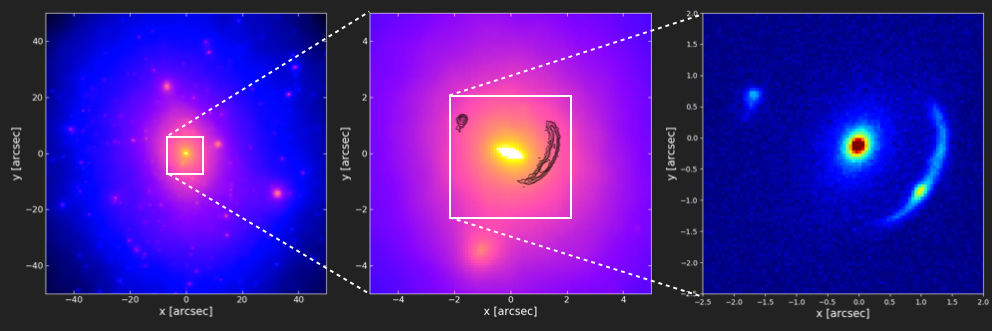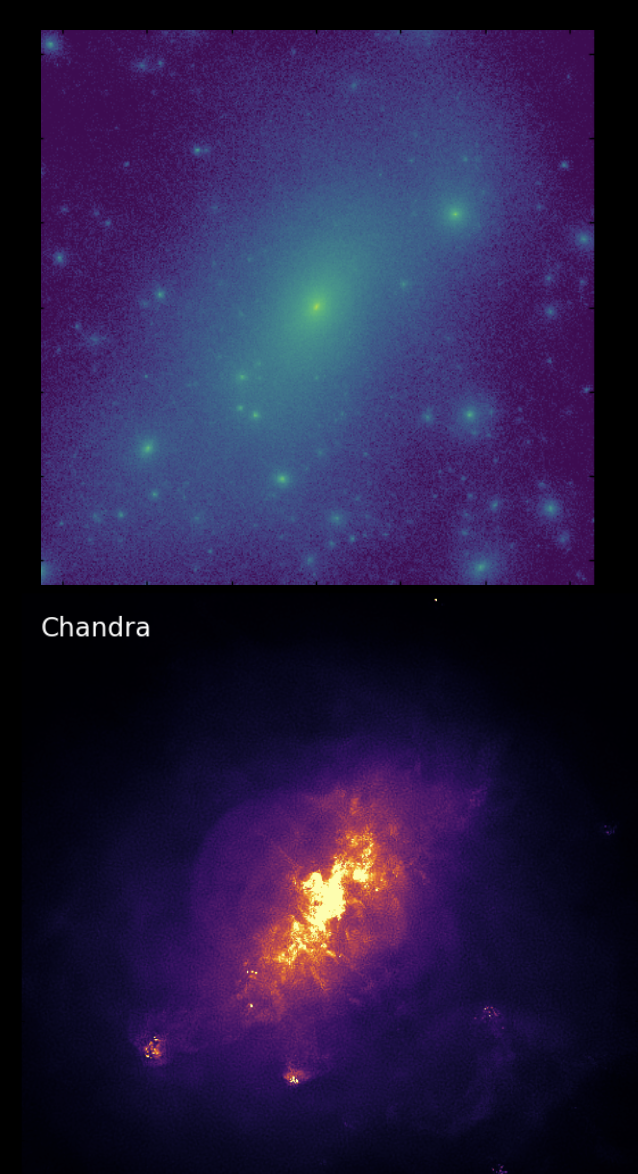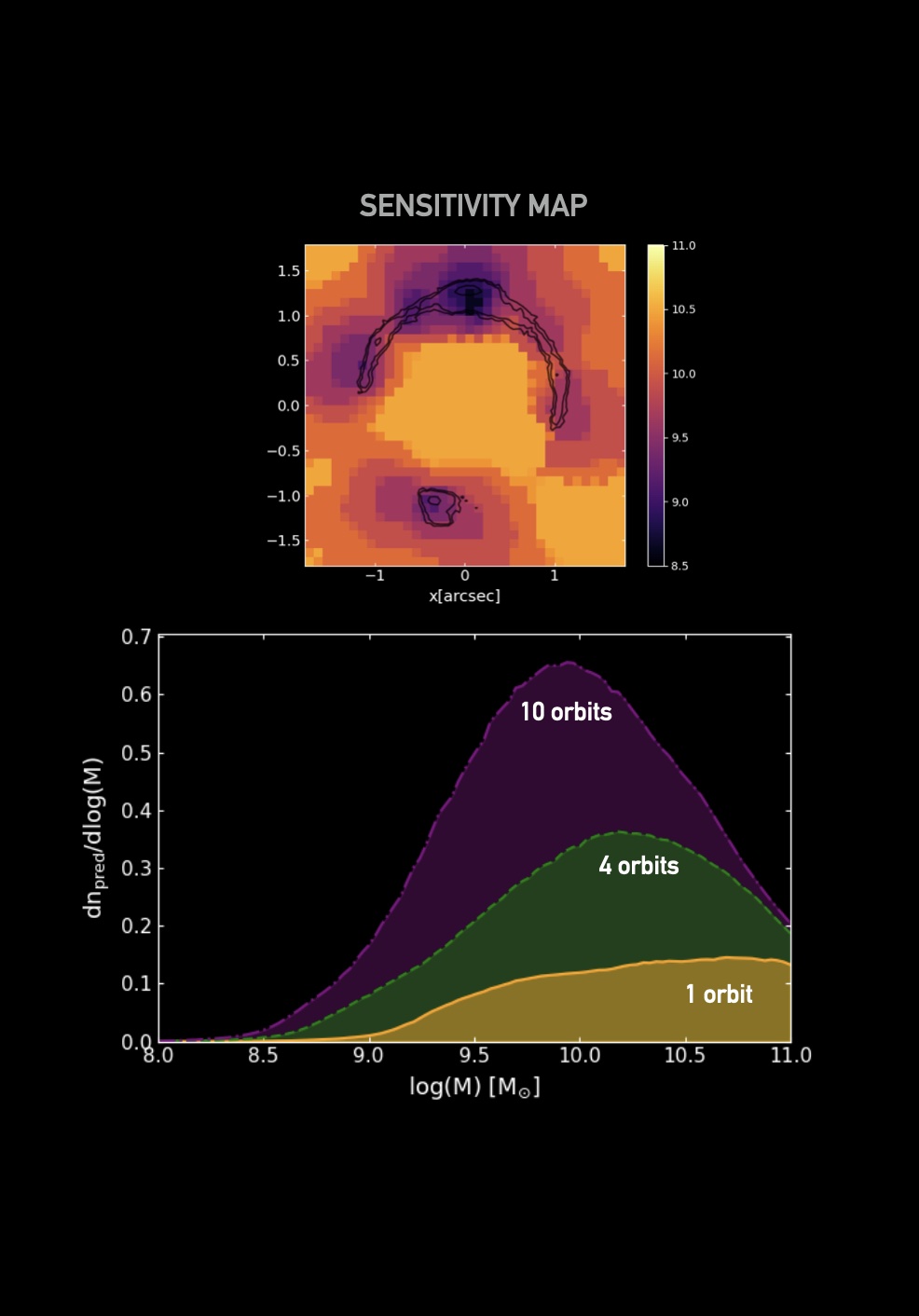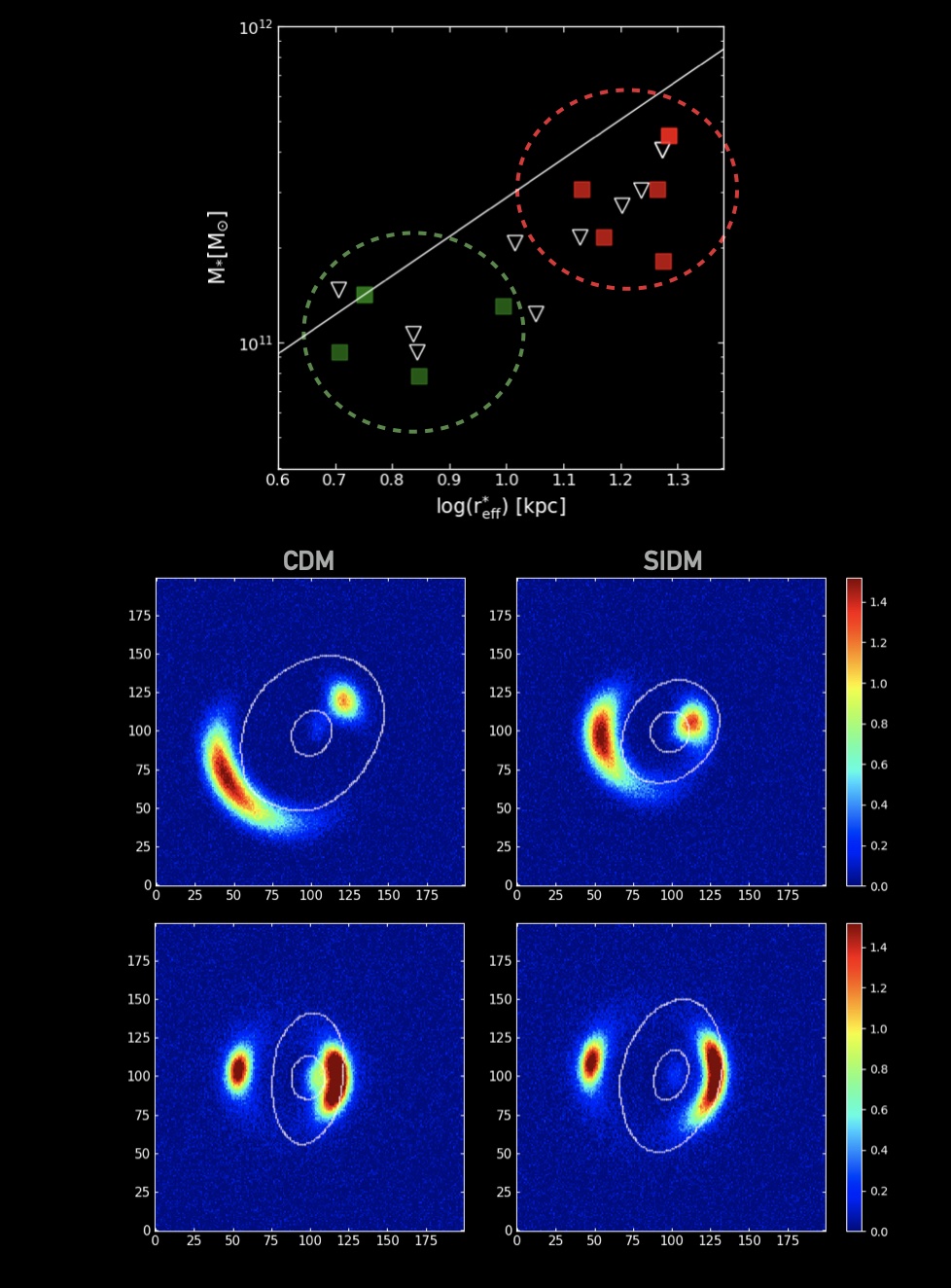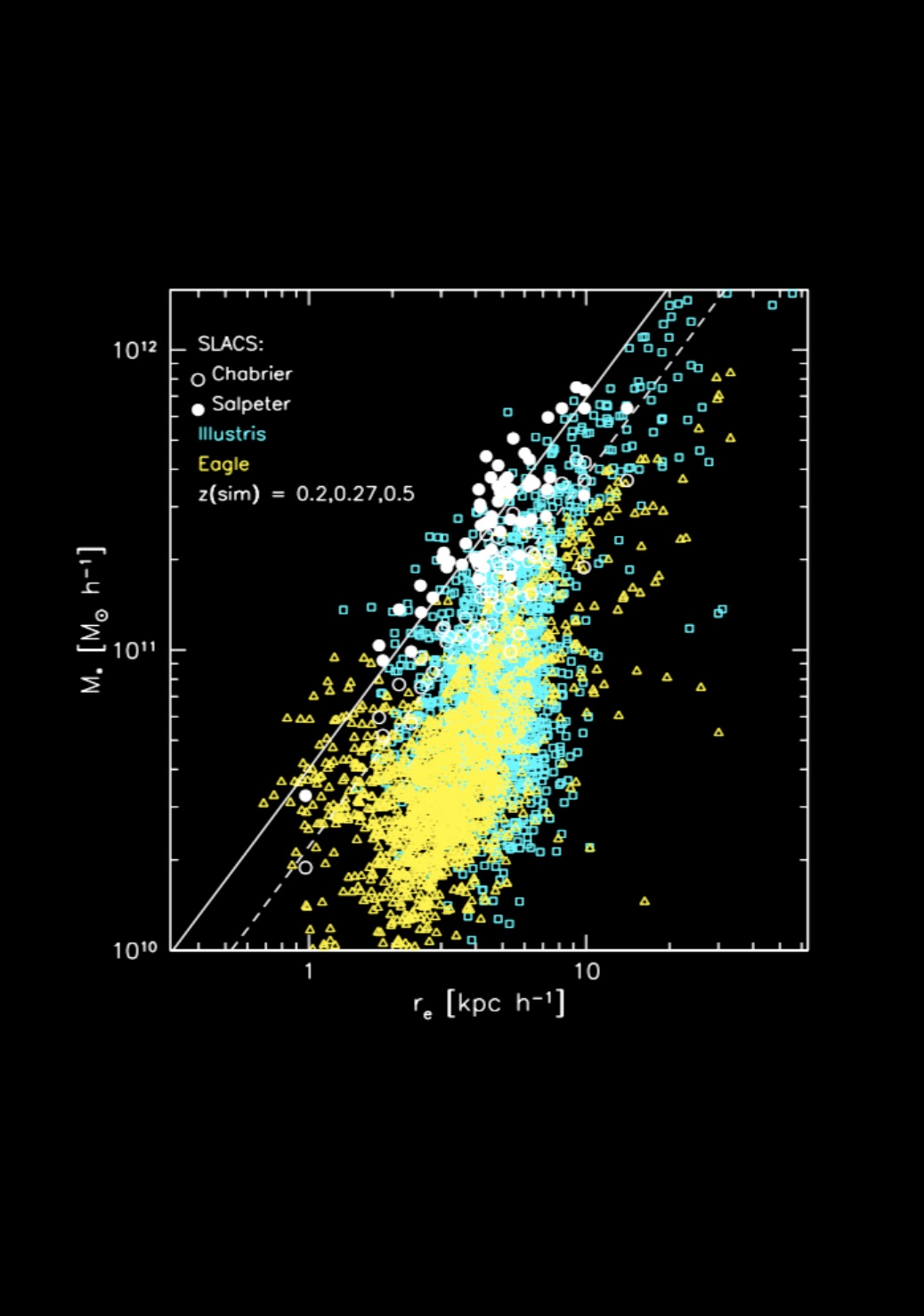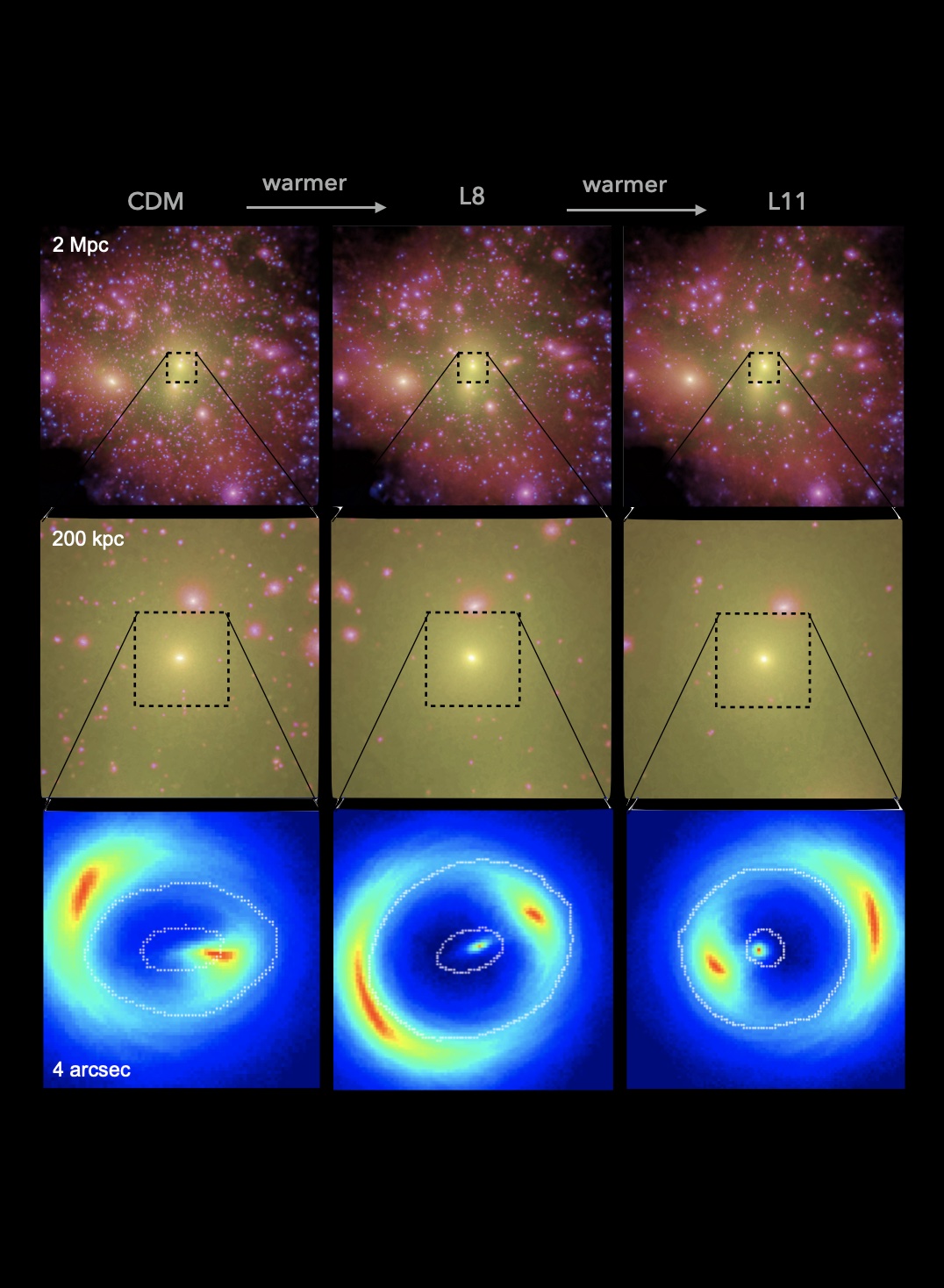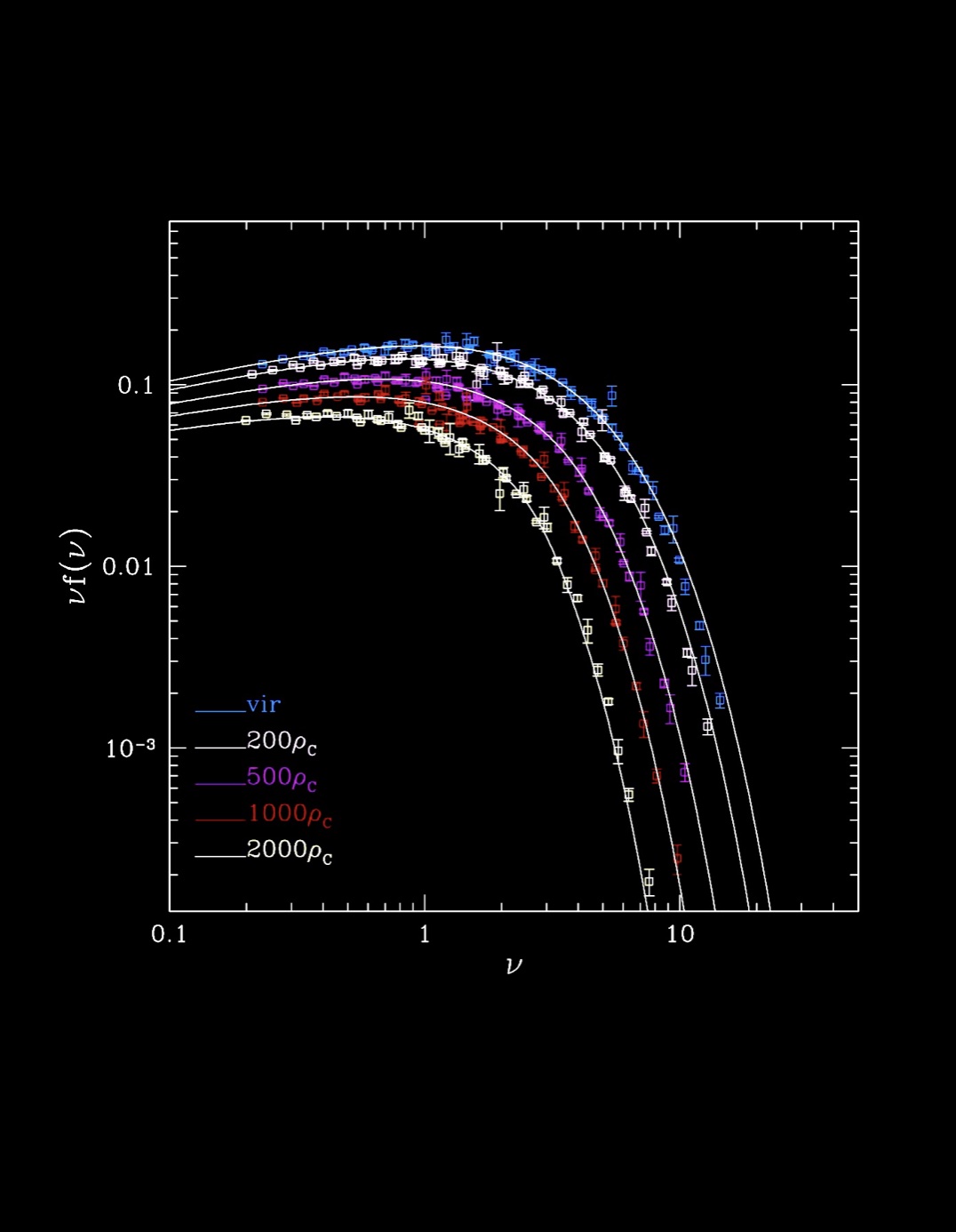Updated predictions for CDM vs SIDM in elliptical galaxies
We study the effect of self-interacting dark matter (SIDM) and baryons on the shapes of early-type galaxies (ETGs) and their dark matter haloes, comparing them to the predictions of the standard cold dark matter (CDM) scenario. We use a sample of five zoom-in simulations of haloes hosting ETGs ($M_{\text vir}\sim 10^{13}M_{\odot}$ and $M_{*}\sim10^{11}M_{\odot}$), simulated in CDM and a SIDM model with constant cross-section of $\sigma_T/m_\chi = 1\ \mathrm{cm}^2 \mathrm{g}^{-1}$, with and without the inclusion of baryonic physics. We measure the three-dimensional and projected shapes of the dark matter haloes and their baryonic content by means of the inertia tensor and compare our measurements to the results of gravitational lensing and X-ray observations. We find that the inclusion of baryons greatly reduces the differences between CDM and a SIDM and thus the ability to draw constraints on the basis of shapes. We find that lensing measurements clearly reject the predictions from CDM dark-matter-only simulations, whereas they show a different degree of preference for the CDM and SIDM hydro scenarios, and cannot discard the SIDM dark-matter-only case. The shapes of the X-ray emitting gas are also comparable to observational results in both hydro runs, with CDM predicting higher elongations only in the very center. Contrary to previous claims at the scale of elliptical galaxies, we conclude that both CDM and our SIDM model with $\sigma_T/m_\chi = 1\ \mathrm{cm}^2 \mathrm{g}^{-1}$ are able to explain observed distributions of halo shapes, once baryons are included in the simulations.
